Pictured above is the Neu-Vita Oculizer, courtesy Robert Greenspan, M.D., www.CollectMedicalAntiques.com. No doubt, youre wondering about the bright orange contraption shown above. Did you miss the announcement about a revolutionary new product to treat vision problems?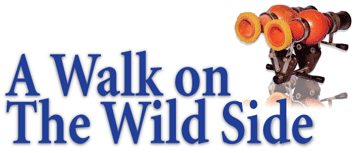
Actually, what you see here is the Neu-Vita Oculizer from
According to its accompanying instructional pamphlet, the Oculizer should be applied either at night or morning (for a few minutes only) as prescribed. The eyeballs are thus gently massaged and the nerve centre strengthened, conditions absolutely necessary for good eyesight.
Today, the Oculizer is obsolete, except as a collectors item. Looking at this contraption, you may wonder how people once believed it could improve their vision. Most likely, the available information convinced them it was effective.
As your patients read about non-traditional eye treatments available on the market today, they may ask you about their merit. Theyll depend on you for answers about which treatments are safe and effective.
Questionable Treatments
Even today, questionable eye treatments abound. While these might be easy for eye-care professionals to spot, they may not be as obvious to our patients.
A case in point: the See Clearly Method (Vision Improvement Technologies, LLC, now defunct). The so-called natural vision improvement kit included manuals, charts, videotapes and audiotapes that demonstrated various eye exercises that could improve vision without the need for glasses, contact lenses or refractive surgery. Much of the See Clearly Method was based on the techniques that William Horatio Bates, M.D., described in his best-selling 1920 book, Perfect Sight Without Glasses.
Members of the scientific community have since discredited Dr. Bates eye exercises by demonstrating that these exercises are ineffective and conflict with known facts.1,2 For example, Dr. Bates recommended sunning (staring at the sun with the eyes wide open) to relax the eye. In reality, this can permanently damage vision due to solar retinopathy.3
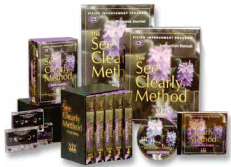
The See Clearly Method, now off the market, promised to improve vision without the need for glasses, contact lenses or refractive surgery.
The See Clearly Method was sold nationwide since 2001 with an advertising campaign of radio, television, print ads and a Web site. With celebrity endorsement, testimonials, seemingly valid scientific references and a risk-free call to action, the company sold up to 10,000 kits per month at approximately $350 apiece.
The See Clearly kits were taken off the market per a fraud lawsuit and resulting court order in December 2006.4
Just like those hopeful folks who purchased the Neu-Vita Oculizer decades ago, people who bought the See Clearly Method apparently believed it was valid, thanks in part to modern advertising. Theyre not alone. Today, as an increasing number of consumers embrace a do-it-yourself attitude toward their own health care, employing complementary and alternative treatments. And, those who use alternative therapies often do not share this information with their health-care providers.5
Diverse Practices
The
Between 1990 and 1997, consumers increasingly used these forms of treatments.5 By 2002, 36% of adults in the
CAM
Despite these figures, most optometric programs do not appear to offer a formal curriculum discussing non-traditional eye care treatments. In January 2007, I conducted an informal e-mail survey of deans and presidents of the 17
Compare this to three previously published surveys of 125 schools that offer a medical doctor degree, 19 schools that offer a doctor of osteopathy degree and 585 schools that offer a nursing degree. Sixty percent of the medical schools, 95% of the osteopathic medical schools and 85% of nursing schools discussed some form of complementary and alternative medicine in their curriculum.5-7
Dietary Supplements
Of particular interest in eye care is the use of vitamins to prevent eye disease. Again, however, our patients will depend on us for answers. And its here where we must distinguish marketing claims from large-scale clinical studies, such as the Age-Related Eye Disease Study (AREDS).
Nutraceuticals became an estimated $21 billion industry in the
More specifically, vitamins, minerals, herbs and other botanicals, amino acids, various extracts, and combinations qualify as dietary supplements according to the Dietary Supplement Health and Education Act (DSHEA). Congress passed the DSHEA in 1994 following intensive lobbying by manufacturers, and former President Bill Clinton signed it into law.
As a result, the FDA regulates these substances as foods rather than drugs. That means manufacturers are not required to submit safety or efficacy data to the FDA before marketing dietary supplements. Although DSHEA prohibits manufacturers from claiming that they prevent, treat or cure a specific disease, it allows them to make labeling statements that describe their supplements alleged effects on the structure and function or general well-being of the body, as long as they bear this disclaimer: This statement has not been evaluated by the Food and Drug Administration. This product is not intended to diagnose, treat, cure, or prevent any disease.
For example, with this disclaimer, a bottle of bilberry extract could have labeling that says that it has traditionally been used to reduce eyestrain and support visual functions, despite a lack of rigorous scientific evidence to substantiate such labeling.9
CAM
A taste of honey is worse than none at all? No studies prove that honey drops treat cataract.
The definitive and accepted treatment for cataract is surgical extraction followed by intraocular lens implantation, yet an Internet search for cataract cure produces a plethora of interesting remedies. One Web site claims that unprocessed honey is an effective treatment for cataract: A few drops of this honey should be put in the eyes. This is an ancient Egyptian remedy which has benefitted [sic] many patients, the authors claim.10 A literature search showed a general absence of data supporting honey as an effective treatment for cataract, aside from one Russian study.11
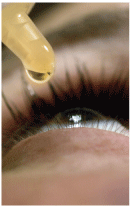
The same Web page promotes garlic as another effective home remedy for cataract. Two or three cloves should be eaten raw daily, the site says. They should be chewed slowly. Garlic helps to clean the crystalline lens of the eye. A literature search also showed an absence of support for consuming garlic as an effective treatment for cataract. However, one study did find that one of the major organosulfides in garlic oil, diallyl disulfide, prevented the development of cataracts of acetaminophen-induced cataracts in mice.12
Yet another Web site stated that it is essential that patients with cataract use Cineraria Cataract Eye Drops, described as the traditional homeopathic remedy found in the Ophthalmology section of the Physicians Desk Reference for over 25 years as a treatment for cataracts.13
Homeopathy is based on the medically disputed premise that infinitesimally small amounts of poisons will relieve the same symptoms they would produce in larger amounts.14 A literature search in PubMed for Cineraria for treating cataracts came up with only a 1981 paper from
Antioxidants for Cataracts
It sounds reasonable that antioxidants might retard the development of age-related cataract. Several such nutraceuticals are marketed on the Internet as natural ways to prevent and treat cataracts, suggesting that cataract surgery is unnecessarily risky. Yet at best, little legitimate evidence exists to suggest antioxidants have a significant role in preventing age-related cataract.
AREDS evaluated 4,757 participants, of which some used a high-dose antioxidant formulation (vitamin C, 500mg; vitamin E, 400IU; beta carotene, 15mg; zinc oxide, 80mg; cupric oxide, 2mg) and some were given placebo daily.16 In one portion of the study, the researchers found that the patients at high risk of developing advanced AMD lowered their risk by about 25% and their risk of vision loss caused by advanced AMD by about 19%. In the cataract portion of the study, however, researchers found that the same nutrients had no significant effect on the development or progression of age-related cataract.
In another clinical trial of 1,193 eligible subjects, vitamin E (500IU daily) used for four years did not reduce the incidence or progression of nuclear, cortical, or posterior subcapsular cataracts.17 The authors concluded that their findings did not support the use of vitamin E to prevent the development or to slow the progression of age-related cataracts.
Another study, the Collaborative Italian-American Clinical Trial of Nutritional Supplements and Age-related Cataract (CTNS), is currently looking at whether a vitamin and mineral supplement (Centrum, Wyeth Consumer Healthcare) containing recommended daily allowances can prevent age-related cataract or delay its progression. Results are expected in March 2008.
Two lesser-known antioxidants in the
Although Japanese doctors may know that pirenoxine and glutathione offer questionable benefit for cataracts, it is possible that they continue to prescribe them as an easy way to satisfy their patients. This would be similar to doctors continuing to prescribe antibiotics for viral upper-respiratory infections, so that patients dont feel theyre leaving the office visit empty-handed.20 Regretfully, this practice doesnt encourage the public to embrace evidence-based approaches to their own health care.
Topical N-acetyl-carnosine might actually work, but it probably wont replace cataract surgery any time soon.
Another antioxidant touted on the Internet for cataracts is N-acetyl-carnosine (NAC). The majority of the scientific literature about NAC for cataracts is authored by Mark Babizhayev, Ph.D., a Russian research scientist who serves as the executive director of Innovative Vision Products (IVP), based in
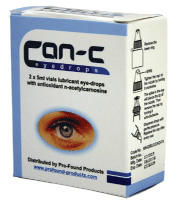
IVP claims that NAC is effective in reducing, reversing and slowing the occurrence of senile cataract.21 In a randomized, placebo-controlled study sponsored by IVP of 49 subjects (76 cataractous eyes), 90% of NAC-treated eyes showed improved best-corrected visual acuity after six months.22 The authors concluded that topical NAC shows potential for treating and preventing cataracts.
Corroborating these results, an independent study of topical NAC for cataracts in dogs showed some marginal reduction in lens opacification in a substantial number of cases.23 While it is unlikely that NAC will usurp traditional surgery for treating cataracts, NAC may hold some clinical benefit for selected cataract patients in which surgery is not desirable. The company says it may also provide beneficial results for such conditions as presbyopia, primary open-angle glaucoma, dry eye syndrome and retinal disease.
Acupuncture for Eyes
Acupuncture has existed as a central part of health care in
Acupuncture has been used to treat and alleviate various ocular conditions, including dry eye, myopia, paralytic strabismus, retinitis pigmentosa, optic atrophy, iritis, conjunctivitis and cataract.26
Benefit could be Great! say the makers of the Eye-Max magnetic eye massager.
One device that attempts to capitalize on acupuncture for eyes is the Eye-Max magnetic acupressure eye massager (Endless Forest Inc.). The Web site for Eye-Max suggests that this product is appropriate for those who experience eyestrain, bloodshot eyes, dry eyes, double vision and headaches.27 The homepage proclaims, Benefit could be Great!
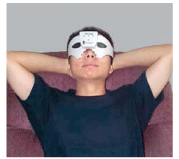
As with many other forms of
This article doesnt come close to reviewing all the available
While there are many exaggerated claims made by people with dubious credentials, O.D.s should remain open-minded about emerging treatments, especially those validated by evidence-based methods. There likely are non-traditional treatments out there, albeit not yet characterized, with the potential to help our patients.
Dr. Chou is in group practice at Carmel Mountain Vision Care in
1. Margi E. Flashes of clear vision and negative accommodation with reference to the Bates method of visual training. Am J Optom Arch Am Acad Optom 1952 Apr;29(4):167-84.
2.
3. Stokkermans TJ, Dunbar MT. Solar retinopathy in a hospital-based primary care clinic. J Am Optom Assoc 1998 Oct;69(10):625-36.
4.
5. Eisenberg DM, Davis RB, Ettner SL, et al. Trends in alternative medicine use in the United States, 1990-1997: results of a follow-up national survey. JAMA 1998 Nov 11;280(18): 1569-75.
6. Barnes P, Powell-Griner E, McFann K, Nahin R. CDC Advance Data Report #343. Complementary and alternative medicine use among adults:
7. Rhee DJ, Katz LJ, Spaeth GL, et al. Complementary and alternative medicine for glaucoma. Surv Ophthalmol 2001 Jul-Aug;46(1):43-55.
8. Smith JR,
9. Canter PH, Ernst E. Anthocyanosides of Vaccinium myrtillus (bilberry) for night visiona systematic review of placebo-controlled trials. Surv Ophthalmol 2004 Jan-Feb;49(1):38-50.
10. Home-remedies-for-you.com. Cataract symptoms, cataract treatment, cataract cure. Available at: www.home-remedies-for-you.com/remedy/Cataract.html. (Accessed February 2008.)
11. Golychev VN. Use of honey in conservative treatment of senile cataracts. Vestn Oftalmol 1990 Nov-Dec;106(6):59-62.
12. Zhao C, Shich H. Prevention of acetaminophen-induced cataract by a combination of diallyl disulfide and N-acetylcysteine. J Ocul Pharmacol Thera 1998 Aug;14(4):345-55.
13. Natural Eye Health. Cataract cure and prevention. www.naturaleyecare.com/diseases.asp?d_num=2. (Accessed February 2008.)
14. Barrett S. Homeopathy: Is it medicine? In: The Health Robbers: A Close Look at Quackery in
15. Albal MV, Chandorkar AG, Bulakh PM. Evaluation of catalin, Succus Cineraria maritima and Catobell in goat lens cultures. Indian J Ophthalmol 1981 Oct;29(3):147-9.
16. Age-Related Eye Disease Study Research Group. A randomized, placebo-controlled, clinical trial of high-dose supplementation with vitamins C and E and beta carotene for age-related cataract and vision loss: AREDS report no. 9. Arch Ophthalmol 2001 Oct;119(10):1439-42.
17. McNeil JJ, Robman L, Tikellis G, et al. Vitamin E supplementation and cataract: randomized controlled trial. Ophthalmology 2004 Jan;111(1):75-84.
18. MedMK.com. Annual sales of domestic pharmaceutical companies. Available at: www.medmk.com/mm/add/ ml_add.htm. (Accessed June 2007.)
19. Sekimoto M, Imanaka Y, Kitano N, et al. Why are physicians not persuaded by scientific evidence? A grounded theory interview study. BMC Health Serv Res 2006 Jul 27; 6:92.
20. Butler CC, Rollnick S, Pill R, et al. Understanding the culture of prescribing: qualitative study of general practitioners and patients perceptions of antibiotics for sore throats. BMJ 1998;317:637642.
21. Can-C cataract eye drops. Available at: www.can-c.net. (Accessed February 2008.)
22. Babizhayev MA, Deyev AI, Yermakova VN, et al. Efficacy of N-acetylcarnosine in the treatment of cataracts. Drugs R D 2002;3(2):87-103.
23. Williams DL, Munday P. The effect of a topical antioxidant formulation including N-acetyl carnosine on canine cataract: a preliminary study. Vet Ophthalmol 2006 Sep-Oct;9(5):311-6.
24. NIH Consensus Conference. Acupuncture. JAMA 1998 Nov 4;280(17):1518-24.
25. Leake R, Broderick JE. Treatment efficacy of acupuncture: a review of the research literature. Integr Med 1998;1:107-115.
26. Astbury N. Alternative eye care. Br J Ophthalmol 2001 Jul;85(7):767-8.
27. Eye-Max. Available at: www.eyemassage.com. (Accessed February 2008.)
28.
29. Fox S. Online Health Search 2006.

